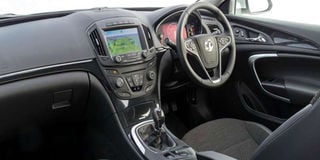What do the ‘-S’ and ‘B’ on my gear stand for?

Use S when going uphill, and B when going downhill, but none of this is really necessary.
What you need to know:
- The S (sport) slot is for a sportier response from the transmission, which simply means a more aggressive driving mode where the gearbox shifts up much higher in the rev range compared to when it is in D (drive).
- The B (brake) slot is for supplementary braking as assisted by the engine, what we call “engine braking”.
- Use S when going uphill, and B when going downhill, but none of this is really necessary.
Mr Baraza,
Kudos for your wide, helpful knowledge regarding cars. In the picture above, what do the “-S” and B for? I have asked many mechanics but they have no idea. What is the right pressure for P195/65 R15; is it 30 or 35?
Mark Ogot
Hello Mr Ogot,
The S (sport) slot is for a sportier response from the transmission, which simply means a more aggressive driving mode where the gearbox shifts up much higher in the rev range compared to when it is in D (drive).
The programming also downshifts at higher revs to keep the engine speed within the power band, much closer to, or right at, the VVT threshold. It prevents hunting* on gradients in a case where a car’s transmission lacks enough ratios to find an appropriate one to hold on to.
(*Hunting: the shifting up and down between consecutive gears because the one is too high and bogs down the engine, losing power, while the other is too low and leads to noisily and thirstily soaring revs).
The B (brake) slot is for supplementary braking as assisted by the engine, what we call “engine braking”. What happens when you let go of the accelerator in a manual car at a very low gear? There is a noticeable nose-down “surge”, yes? That is engine braking at work, and it is more pronounced in lower gears than in higher ones.
I presume the B slot influences lock-up control in the torque converter/clutch to prevent disengagement, which is a thing automatics tend to do a lot on liftoff/closed throttle to prevent that surge I was referring to and create a smoother drive. Engine braking supplements the wheel brakes, thus reducing the likelihood of overheating and suffering brake fade.
Without confounding you further with my increasingly technical answer, let’s wrap it up this way: drive in D. The vehicle will do 99 per cent of what you want it to without resorting to the BS of B and S. Use S when going uphill, and B when going downhill, but none of this is really necessary.
The “right” pressure for 195/65/15s is anything between 28 and 42. Drop below 25 and there will be a discernible bulge on the lower sidewall, meaning your tyre is underinflated and brings the associated downsides with it: poor fuel economy, road noise, tyre wear along the outer edges of the tread pattern, risk of ripping the tyre off the rim under duress.
I have the exact same tyre size and do precisely 40 because I drive a turbocharged Subaru and I like my footwear firm and plump, which works fine for me.
Forty-five and above means you are wandering into the realm of overinflation and its associated disadvantages: the ride quality becomes harsher and jarring, uneven tyre wear focused along the centre of the tread pattern and the risk of a blowout, especially on impact with road imperfections. So 30 or 35, either will do.





